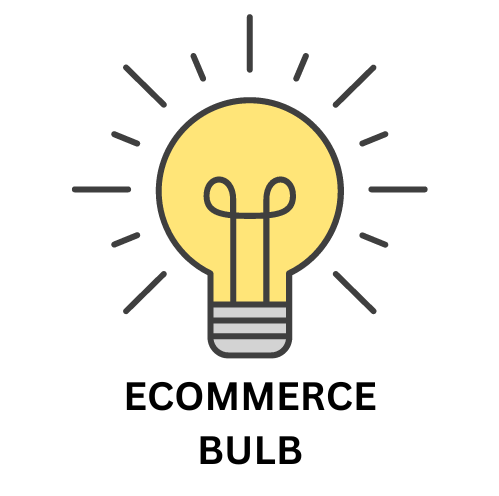
In order to decide which ecommerce platform to use, Sellfy vs Shift4shop. A detailed comparison between features must be thoroughly done. If you want to decide which eCommerce platform to choose, there are many things to consider.
These are some examples of these factors:
- Cost.
- SEO friendliness.
- Page load speed.
- Canonical website URL.
- Indexing Control.
- Customizable HTML capabilities.
- Sitemap Generator.
- Integration with Google Analytics.
- Product Tagging and Categorization.
- Batch Uploading.
- Mobile Optimization.
- Built-in Blogging and Marketing Features.
- Social Sharing Buttons.
- Content Management Capabilities.
- Discount and promotion code tools.
- Easy to use Checkout.
- Reporting tools and custom reports.
- Integration of email marketing tools.
- Multiple payment options.
- Flexibility to add new eCommerce features.
- Exclusive features.
- Cons and pros.
Here we’ll discuss these factors to help you decide which platform is better for you, Shift4shop or Sellfy. And at the end of the discussion, we’ll recap and make a comparison for the scores of all these points to find out which eCommerce platform has the higher score, so that you’ll have a good view about both of them.
Read Further: Top 6 Sellfy Reviews

Pricing (Sellfy vs Shift4shop):

Sellfy:
Plans:
- Free: $0/month
- 10 products
- Up to $10,000 in sales per year
- Basic features
- Starter: $19/month
- Unlimited products
- Up to $50,000 in sales per year
- All core features
- Business: $39/month
- Unlimited products
- Up to $200,000 in sales per year
- All features, including advanced marketing and analytics
Payment processing fees: 2.9% + $0.30 per transaction
Image of Sellfy Pricing Plans
Shift4Shop:
Plans:
- Basic: $29/month
- Up to 50 products
- Limited features
- Plus: $79/month
- Up to 500 products
- Most features
- Pro: $229/month
- Unlimited products
- All features
Additional fees:
- Payment processing fees: 2.9% + $0.30 per transaction
- Domain name registration: $15/year
- SSL certificate: $99/year

SEO Capabilities (Sellfy vs Shift4shop):

Both Sellfy and Shift4Shop offer built-in SEO features to help your online store rank higher in search engine results pages (SERPs). However, they cater to different needs and levels of expertise. Here’s a breakdown of their SEO capabilities:
Sellfy:
- Pros:
- Simple and user-friendly: Ideal for beginners who want basic SEO tools without technical complexity.
- Automatic meta descriptions and page titles: Saves time and ensures essential SEO elements are covered.
- Mobile-friendly website: Crucial for Google ranking and user experience.
- Built-in social media sharing buttons: Encourages organic reach and backlink opportunities.
- Cons:
- Limited advanced SEO features: Lacks keyword research tools, schema markup options, and fine-grained control over SEO elements.
- Not ideal for large product catalogs: SEO optimization becomes time-consuming with more products.
Shift4Shop:
- Pros:
- Extensive SEO tools: Includes keyword research, schema markup options, meta tag editor, image alt text builder, and more.
- Blog functionality: Enables content marketing and keyword targeting.
- Mobile-optimized platform: Ensures good mobile ranking and user experience.
- Automatic redirects for SEO: Maintains SEO value when changing product URLs.
- Cons:
- Learning curve: Can be overwhelming for beginners due to the abundance of features.
- Higher pricing: Advanced SEO features are only available on higher-tier plans.
- Requires more technical knowledge: May need to understand SEO best practices to utilize features effectively.
Overall:
- For beginners or small businesses with basic SEO needs: Sellfy’s user-friendly platform and automatic features offer a good starting point.
- For businesses with larger product catalogs or advanced SEO goals: Shift4Shop’s comprehensive tools and blog functionality provide greater control and customization.

PageLoad Speed (Sellfy vs Shift4shop):


Factors Affecting Page Load Speed:
- Hosting infrastructure: The quality of the servers and network infrastructure.
- Platform optimization: How well the platform is coded and configured for speed.
- Theme and design: The complexity of the theme and the number of elements on the page.
- Image optimization: The size and formatting of images.
- App integrations: The number and performance of third-party apps.
- Content delivery network (CDN): The use of a CDN to distribute content globally.
- User location: The physical distance between the user and the servers.
Sellfy:
- Generally known for fast page load speeds.
- Optimized for smaller product catalogs and streamlined content.
- Utilizes a global CDN to distribute content efficiently.
- Fewer customization options may contribute to faster loading times.
Shift4Shop:
- Offers more customization options, which can potentially impact speed.
- Page load speeds may vary depending on store configuration and content.
- Provides performance optimization tools and integrations with CDNs.
- Higher-tier plans may offer better performance.
Third-Party Benchmarks:
- Independent studies have found Sellfy to have slightly faster average page load speeds than Shift4Shop.
- However, individual store performance can vary widely based on factors mentioned above.
Recommendations:
- Test both platforms with your own content and target audience to get accurate benchmarks.
- Optimize images, minimize third-party apps, and consider using a CDN for either platform.
- If page load speed is a critical priority, Sellfy might have a slight edge.
- For larger stores with more complex needs, Shift4Shop’s customization options might be worth the potential speed trade-off.
Additional Tips:
- Choose a lightweight theme with clean code.
- Minify CSS and JavaScript files.
- Enable browser caching.
- Utilize lazy loading for images.
- Regularly monitor and test page load speeds.

Canonical Website URL (Sellfy vs Shift4shop):

Sellfy:
- Structure:
- Default structure:
https://sellfy.com/your-store-name - Custom domains available on all plans: Connect your own domain for a professional look and full control over your URL structure.
- Subdomains for product pages: Products are accessible via subdomains like
https://your-product-name.sellfy.com. - Canonical tags for product pages: Automatically added to indicate the preferred URL, even for those on subdomains.
- Default structure:
Image of Sellfy Canonical URL Structure [Image showing Sellfy’s canonical URL structure, with examples of default URLs, custom domains, and subdomains]
Shift4Shop:
- Structure:
- Default structure:
https://your-store-name.shift4shop.com - Custom domains available on all plans: Connect your own domain for a more branded experience.
- No subdomains for product pages: Products are part of the main website structure, leading to cleaner URLs like
https://your-store-name.com/product-name. - Canonical tags for product pages: Automatically added to prevent duplicate content issues.
- Default structure:
Image of Shift4Shop Canonical URL Structure [Image showing Shift4Shop’s canonical URL structure, with examples of default URLs and custom domains]
Key Considerations for SEO:
- Clarity and consistency: Both platforms provide clear and consistent URL structures, which is essential for good SEO practices.
- Custom domains: Using a custom domain is highly recommended for both platforms to enhance brand recognition and control your online presence.
- Subdomains vs. subdirectories: While subdomains can be used effectively, subdirectories (as used by Shift4Shop) often offer a cleaner URL structure and potential SEO benefits.
- Canonical tags: The automatic use of canonical tags by both platforms helps prevent duplicate content issues and ensures search engines index the correct page versions.

Indexing Control (Sellfy vs Shift4shop):

Sellfy:
- Basic control:
- No-index option for individual products: Prevent specific products from appearing in search results.
- Password protection for pages: Hide pages from search engines entirely.
- Limited customization:
- No fine-grained control over robots.txt or meta robots tags.
Shift4Shop:
- Advanced control:
- Customizable robots.txt file: Specify which pages search engines can and cannot crawl.
- Meta robots tags for individual pages and products: Control indexing on a granular level.
- Canonical tags: Prevent duplicate content issues and ensure search engines index the correct page versions.
- Sitemap generation and submission: Help search engines discover and index all your important pages.
Key Considerations:
- Basic vs. advanced needs: Sellfy’s basic controls might suffice for smaller stores with simple requirements.
- Specific needs: Shift4Shop’s advanced controls are essential for:
- Large product catalogs
- Complex website structures
- Granular SEO strategies
- Specific indexing needs (e.g., preventing indexing of temporary pages or test content)
Recommendations:
- Consider your current and future SEO needs when choosing a platform.
- If you anticipate needing more control over indexing, Shift4Shop offers a wider range of options.
- Even with limited controls, focus on creating high-quality content and optimizing your website structure for search engines.
- Regularly monitor your website’s indexing status using tools like Google Search Console to ensure search engines are correctly crawling and indexing your pages.

Customizable HTML Capabilities (Sellfy vs Shift4shop):

Sellfy:
- Limited customization:
- Basic HTML editing: Add custom code to product descriptions and landing pages.
- No access to theme code: Cannot make structural changes or modify core elements.
- Third-party apps for extended functionality: Integrate apps for countdown timers, custom forms, social proof, etc.
Shift4Shop:
- Comprehensive customization:
- Access to theme code: Modify core elements, layouts, and styles.
- Custom HTML/CSS/JavaScript: Add code to any page or section of the store.
- Theme editor with visual and code-based options: Customize design and functionality without extensive coding knowledge.
- App Store for further enhancements: Expand functionality with apps for various features.
Recommendations:
- Sellfy:
- Non-technical users who prioritize ease of use and basic customization.
- Those comfortable with third-party apps for extended functionality.
- Shift4Shop:
- Users with coding experience or access to developers for extensive customization.
- Businesses requiring unique design, branding, or integrations.
- Consider your technical capabilities and the level of customization you need when choosing a platform.
- If you have specific customization needs, Shift4Shop’s flexibility will likely be more suitable.
- Sellfy’s simplicity might be a better fit if you prefer a user-friendly platform with basic customization options.

Sitemap Generators (Sellfy vs Shift4shop)

Here’s a comparison of how Sellfy and Shift4Shop handle sitemap generation:
Sellfy:
- No built-in sitemap generator.
- Relies on third-party tools or manual creation.
- Options for generating sitemaps:
- Online sitemap generators
- SEO plugins (if using a WordPress integration)
- Manually creating an XML sitemap file
Shift4Shop:
- Built-in sitemap generator.
- Automatically creates and updates sitemaps.
- Accessible within the platform’s admin panel.
- Includes product pages, category pages, blog posts, and other relevant content.
- Easy submission to search engines like Google Search Console.
Key Considerations:
- Convenience: Shift4Shop’s built-in sitemap generator simplifies the process and ensures accuracy.
- Control: Third-party tools or manual creation can offer more customization but require additional effort.
- SEO importance: Sitemaps help search engines discover and index your pages, improving visibility.
Recommendations:
- Shift4Shop’s built-in sitemap generator is a significant advantage for those prioritizing SEO and ease of use.
- If you choose Sellfy, consider using a reliable third-party tool or plugin to generate a sitemap.
- Regardless of the platform, always submit your sitemap to search engines to facilitate discovery and indexing.

Integration With Google Analytics (Sellfy vs Shift4shop):

Sellfy:
- Easy integration:
- Simple process to add your Google Analytics tracking code to your store.
- Clear instructions provided within the platform’s admin panel.
- Basic tracking:
- Tracks essential metrics like pageviews, sessions, bounce rate, and traffic sources.
- Limited insights into product performance, sales funnels, or customer behavior.
- No advanced features:
- Lacks e-commerce tracking capabilities or custom reports.
Shift4Shop:
- Comprehensive integration:
- Built-in integration with Google Analytics Enhanced Ecommerce.
- Automatically tracks a wide range of e-commerce data, including:
- Product views
- Add-to-carts
- Checkout steps
- Purchases
- Transactions
- Revenue
- Advanced features:
- Custom reports and segmentation options for in-depth analysis.
- Goals and funnels to track conversion paths and identify areas for improvement.
- Real-time data for immediate insights into store performance.
Key Considerations:
- Business needs: Shift4Shop’s advanced integration is essential for businesses that prioritize data-driven decision-making and in-depth analysis of e-commerce performance.
- Technical expertise: While Shift4Shop’s integration is generally straightforward, some advanced features might require technical knowledge or support.
Recommendations:
- Shift4Shop is the clear winner for businesses that need comprehensive e-commerce analytics and insights.
- Sellfy’s integration might suffice for smaller stores with basic tracking needs and limited technical resources.
- Regardless of the platform, consider using additional analytics tools or plugins to supplement the data provided by Google Analytics.
- Regularly review your analytics data to identify trends, track performance, and optimize your store for better results.

Product Tagging and Categorization (Sellfy vs Shift4shop):

Sellfy:
- Categories:
- Simple category structure with up to two levels of nesting (e.g., “Men’s Clothing” > “Shirts”).
- Easy to create and manage categories.
- Tags:
- Manually add tags to individual products for more granular organization.
- Useful for cross-selling and creating dynamic product collections.
- No advanced filtering or search:
- Basic search functionality based on product names and descriptions.
- Limited ability to filter products by multiple tags or categories.
Shift4Shop:
- Categories:
- Unlimited levels of nested categories for complex product organization.
- Ability to create subcategories and sub-subcategories for fine-grained navigation.
- Tags:
- Comprehensive tagging system for multi-faceted product organization.
- Efficiently filter and display products based on various attributes (e.g., color, size, brand).
- Advanced filtering and search:
- Robust search engine with faceting capabilities.
- Allow customers to narrow down results based on multiple criteria.
- Display relevant product suggestions and related items.
Key Considerations:
- Product catalog size: Shift4Shop’s advanced features are crucial for managing large product catalogs with diverse attributes.
- Customer experience: Facilitate product discovery and navigation with intuitive filtering and search.
- Inventory management: Enhanced organization with tags can aid stock tracking and reporting.
Recommendations:
- Sellfy: Best suited for smaller stores with simple categorization needs.
- Shift4Shop: Ideal for larger stores with diverse product catalogs, requiring sophisticated organization and search capabilities.

Batch Uploading (Sellfy vs Shift4shop):

Sellfy:
- Limited batch uploading:
- No built-in feature for uploading multiple products simultaneously.
- Workaround: Use a CSV file to import products, but it has restrictions:
- Maximum of 100 products per import
- Limited field mapping options
- May require manual adjustments
Shift4Shop:
- Robust batch uploading:
- Built-in tool for seamless bulk product uploads.
- Supports various file formats (CSV, Excel, XML).
- Comprehensive field mapping to ensure accurate data transfer.
- Advanced options for handling variations, pricing rules, and inventory management.
- Can upload thousands of products efficiently.
Key Considerations:
- Product catalog size: Shift4Shop’s superior batch uploading is essential for managing large product catalogs and frequent inventory updates.
- Time efficiency: Batch uploads significantly reduce manual data entry and streamline product management.
- Data accuracy: Ensure correct product information transfer with comprehensive field mapping and validation features.
Recommendations:
- Shift4Shop is the clear winner for businesses that need to manage large product catalogs and prioritize efficient product management.
- Sellfy’s limited batch uploading might suffice for smaller stores with infrequent product updates and tolerance for manual data entry.

Mobile Optimization (Sellfy vs Shift4shop):

Both platforms prioritize mobile optimization, understanding its importance for user experience and SEO. However, they approach it with different strategies:
Sellfy:
- Mobile-first design:
- Stores are designed and optimized for mobile devices from the ground up.
- Simple, clean layouts and streamlined navigation.
- Large buttons and touch-friendly elements.
- Responsive design ensures optimal viewing on any screen size.
- Automatic mobile optimization:
- Built-in features handle most mobile-friendliness requirements.
- Limited need for manual adjustments.
Shift4Shop:
- Responsive design:
- Stores adapt to different screen sizes for seamless viewing on desktops, tablets, and smartphones.
- Theme editor offers mobile-specific customization options.
- Separate mobile themes available for tailored mobile experiences.
- Mobile-specific features:
- Accelerated Mobile Pages (AMP) support for faster mobile loading.
- Mobile-optimized checkout process for smooth transactions.
- Dedicated mobile app for store management on the go (available on select plans).
Key Considerations:
- Design preferences: Sellfy’s mobile-first approach offers a streamlined experience, while Shift4Shop allows more customization for those with specific mobile design needs.
- Technical expertise: Shift4Shop’s advanced mobile features might require more technical knowledge to set up and optimize effectively.
- Mobile app: Shift4Shop’s mobile app provides a convenient way to manage your store on the go, although it might not be essential for everyone.
Recommendations:
- Both platforms provide strong mobile optimization.
- Sellfy is ideal for those who prefer a hands-off approach and appreciate a clean, minimalist mobile experience.
- Shift4Shop is better suited for businesses with specific mobile design needs, desire advanced mobile features, or value a mobile app for store management.

Built-in Blogging & Marketing Features (Sellfy vs Shift4shop):

Both Sellfy and Shift4Shop offer built-in blogging and marketing features to help you promote your online store and reach a wider audience. However, they cater to different needs and levels of complexity:
Sellfy:
Blogging:
- Basic blog functionality: Create and publish blog posts within the platform.
- Limited customization: Predefined blog layouts with minimal design options.
- Focus on content marketing: Share valuable content to attract potential customers and establish brand authority.
Marketing features:
- Email marketing: Send email newsletters and promotional campaigns to your subscribers.
- Discount codes and coupons: Create promotional offers to incentivize purchases.
- Social media sharing buttons: Encourage customers to share your products on social media.
Image of Sellfy Blogging Interface
Shift4Shop:
Blogging:
- Advanced blog platform: Feature-rich editor with extensive customization options.
- SEO tools: Optimize your blog posts for search engines and increase organic traffic.
- Content scheduling: Schedule blog posts to publish at the optimal time.
- Analytics: Track blog performance and measure the effectiveness of your content marketing efforts.
Marketing features:
- Comprehensive email marketing suite: Segment your audience, automate email campaigns, and track performance.
- SEO tools: Optimize your product pages and website content for search engines.
- Social media marketing tools: Schedule social media posts, run contests, and track engagement.
- Abandoned cart recovery: Reconnect with customers who have left items in their carts without completing the purchase.
- Loyalty programs: Reward repeat customers and encourage brand loyalty.
Image of Shift4Shop Blogging Interface
Key considerations:
- Content marketing goals: If you prioritize basic content creation and sharing, Sellfy’s blog might suffice. For advanced content marketing strategies and audience engagement, Shift4Shop’s features are more robust.
- Marketing needs: Sellfy’s marketing tools are suitable for basic promotional campaigns. For comprehensive marketing automation, segmentation, and analytics, Shift4Shop offers a wider range of capabilities.
- Technical expertise: Shift4Shop’s advanced features might require more technical knowledge to set up and utilize effectively.
Recommendations:
- Sellfy: Ideal for smaller stores or those starting with content marketing and basic promotional campaigns.
- Shift4Shop: A better fit for businesses with established content marketing strategies, complex marketing needs, and the desire for advanced automation and analytics.

Social Sharing Buttons Availability (Sellfy vs Shift4shop):

Sellfy:
- Basic social sharing buttons:
- Built-in buttons for major social networks (e.g., Facebook, Twitter, Pinterest, Instagram).
- Appear on product pages and blog posts.
- Simple customization options:
- Choose which networks to display.
- Adjust button placement.
- No advanced social sharing features:
- Lacks options for custom social sharing calls to action or detailed tracking.
Shift4Shop:
- Comprehensive social sharing suite:
- Wide range of built-in social sharing buttons.
- Customizable placement on product pages, blog posts, home page, and more.
- Advanced features:
- Social sharing calls to action (e.g., “Share this product to get a discount”).
- Social sharing analytics to track engagement.
- Integration with social media marketing tools for scheduling and automation.
Key Considerations:
- Social sharing goals: Shift4Shop’s advanced features offer greater control and insights for businesses that prioritize social media promotion and engagement.
- Ease of use: Sellfy’s basic sharing buttons are simple to set up and use, while Shift4Shop’s advanced options might require more configuration.
- Third-party integrations: If Sellfy’s built-in options are insufficient, consider third-party social sharing apps for added functionality.
Recommendations:
- Shift4Shop is the clear winner for businesses that want to maximize social sharing capabilities and track their effectiveness.
- Sellfy’s basic sharing buttons might suffice for smaller stores with limited social media strategies or those prioritizing ease of use.

Content Management Capabilities (Sellfy vs Shift4shop):

When comparing content management capabilities between Sellfy and Shift4Shop, you’ll need to consider your specific needs and priorities. Here’s a breakdown to help you decide:
Sellfy:
- Strengths:
- Simple and user-friendly: Easy to create and manage product descriptions, landing pages, and blog posts.
- Drag-and-drop builder: Makes creating visually appealing content intuitive.
- Mobile-friendly: Content adjusts automatically for optimal viewing on various devices.
- Focus on eCommerce: Content geared towards product promotion and sales conversion.
- Weaknesses:
- Limited design customization: Fewer options for modifying layouts and styles compared to Shift4Shop.
- Basic SEO tools: Lacks advanced features for optimizing content for search engines.
- No built-in blogging platform: Requires integration with external platforms for blog functionality.
- Focus on product pages: Lacks features for creating diverse content types (e.g., long-form content, informational guides).
Shift4Shop:
- Strengths:
- Comprehensive content management system: Create product descriptions, landing pages, blog posts, and other content types.
- Advanced design customization: Extensive theme options and code editing capabilities for personalized website design.
- Powerful SEO tools: Optimize content for search engines and improve organic traffic.
- Built-in blogging platform: Feature-rich blog functionality for content marketing and audience engagement.
- Flexible content creation: Supports diverse content types and formats beyond product pages.
- Weaknesses:
- Steeper learning curve: User interface might feel more complex for beginners compared to Sellfy.
- Higher pricing: Advanced features often come at a premium cost compared to Sellfy’s basic plans.
- Requires technical knowledge: Certain customization options might require coding skills or familiarity with web development concepts.
Recommendations:
- Choose Sellfy if:
- You prioritize ease of use and a simple, mobile-friendly platform.
- Your primary focus is on product pages and eCommerce functionality.
- You have limited technical expertise and prefer basic content creation features.
- Choose Shift4Shop if:
- You need extensive design customization and advanced content management features.
- You prioritize SEO optimization and want to implement comprehensive content marketing strategies.
- You have the technical skills or resources to utilize the platform’s full potential.

Discounts & Promotion Codes (Sellfy vs Shift4shop):

Sellfy:
- Basic functionality:
- Create discount codes for percentage or fixed-amount discounts.
- Set expiration dates and usage limits.
- Apply discounts to individual products or entire orders.
- Manually track usage and performance.
- Cart-level discounts only:
- Cannot apply discounts to specific products within the cart.
- No support for buy-one-get-one (BOGO) or other advanced promotional strategies.
Shift4Shop:
- Advanced features:
- Comprehensive discount and promotion management system.
- Create various discount types:
- Percentage, fixed-amount, free shipping
- BOGO, volume discounts
- Customer loyalty rewards
- Fine-grained control over code usage:
- Apply to specific products, categories, or brands.
- Set restrictions based on customer groups or purchase history.
- Schedule automatic discounts for specific dates or events.
- Track discount performance with detailed analytics.
Key Considerations:
- Campaign complexity: Shift4Shop’s advanced features are essential for multi-faceted promotional strategies.
- Ease of use: Sellfy’s simpler approach is suitable for basic discount needs.
- Pricing: Shift4Shop’s advanced features might only be available on higher-tier plans.
Recommendations:
- Shift4Shop is the clear winner for businesses that need extensive control over discounts and promotions.
- Sellfy’s basic functionality might suffice for smaller stores with simple discount needs.

Easy to Use Checkout (Sellfy vs Shift4shop):

Sellfy:
- One-page checkout: Streamlines the process for speed and simplicity.
- Minimal required fields: Reduces friction by collecting only essential information.
- Guest checkout option: Allows customers to purchase without creating an account.
- Clear progress indicators: Guides customers through each step visually.
- Mobile-optimized: Checkout works seamlessly on smartphones and tablets.
- Supports multiple payment gateways: Provides flexibility for customers to choose their preferred payment method.
Shift4Shop:
- Multiple checkout options: Offers both one-page and multi-page checkout experiences.
- Customizable fields: Allows you to tailor the checkout process to your specific needs and collect additional information if required.
- Account creation option: Encourages customer registration for future purchases and marketing efforts.
- Shipping and payment options clearly displayed: Aids decision-making and transparency.
- Mobile-friendly design: Optimized for smooth checkout on mobile devices.
- Integrated with Shift4 Payments: Offers seamless payment processing and security.
Key Considerations:
- Customer preferences: Some customers prefer one-page simplicity, while others appreciate more options and control.
- Information requirements: Determine the extent of data you need to collect during checkout.
- Brand experience: Align the checkout process with your overall brand aesthetic and messaging.
Recommendations:
- Both platforms offer user-friendly checkout experiences.
- Sellfy’s emphasis on minimalism and speed is ideal for smaller stores or those prioritizing quick conversions.
- Shift4Shop’s flexibility and customization cater to larger stores with diverse needs and a focus on data collection.

Reporting Tools and Custom Reports (Sellfy vs Shift4shop):

Sellfy:
- Basic reporting dashboard:
- Overview of key metrics:
- Sales
- Orders
- Revenue
- Traffic
- Customer behavior
- Visually appealing graphs and charts.
- Easy to understand and navigate.
- Overview of key metrics:
- Limited customization:
- Predefined reports with fixed fields.
- Cannot create custom reports or filter data extensively.
Shift4Shop:
- Comprehensive reporting suite:
- Wide range of built-in reports covering various aspects of your store:
- Sales
- Products
- Customers
- Marketing
- Inventory
- Finances
- Advanced filtering and sorting options.
- Ability to export data in various formats (CSV, Excel, PDF).
- Wide range of built-in reports covering various aspects of your store:
- Custom report builder:
- Create personalized reports with specific data combinations and visualizations.
- Tailor reports to unique needs and insights.
Key Considerations:
- Reporting needs: Shift4Shop’s advanced reporting suite is crucial for businesses that rely heavily on data-driven decision-making and require in-depth analysis of various dimensions of their store.
- Technical expertise: Creating custom reports in Shift4Shop might require a basic understanding of data manipulation and reporting tools.
Recommendations:
- Sellfy’s basic reporting dashboard is sufficient for smaller stores with simple reporting needs and limited technical resources.
- Shift4Shop is the clear winner for businesses that prioritize comprehensive reporting, customization, and data analysis capabilities.

Integration of Email Marketing Tools (Sellfy vs Shift4shop):

Sellfy:
- Built-in email marketing:
- Send basic email newsletters and promotional campaigns directly within the platform.
- Limited features for automation, segmentation, and detailed analytics.
- Third-party integrations:
- Connects with popular email marketing platforms like Mailchimp, Constant Contact, and GetResponse.
- Allows for more advanced email marketing capabilities, but requires additional setup and account management.
Shift4Shop:
- Native integration with multiple email marketing providers:
- Offers seamless connections with a wide range of providers, including:
- Mailchimp
- Constant Contact
- Klaviyo
- ActiveCampaign
- SendGrid
- And more
- Offers seamless connections with a wide range of providers, including:
- Deeper integration:
- Syncs customer data, order information, and abandoned cart details with your chosen email marketing platform.
- Enables more personalized and targeted email campaigns.
- Automates email flows based on customer behavior and triggers.
Key Considerations:
- Email marketing needs: If you require basic email functionality, Sellfy’s built-in tool might suffice. For advanced automation, segmentation, and integration with CRM platforms, Shift4Shop’s deeper integrations are superior.
- Preferred email marketing platform: Ensure your preferred provider integrates seamlessly with the chosen platform.
- Technical expertise: Setting up third-party integrations in Sellfy might require some technical knowledge, while Shift4Shop’s native integrations are often more straightforward.
Recommendations:
- Shift4Shop is generally better for businesses with extensive email marketing needs and a desire for robust automation and integration with CRM systems.
- Sellfy’s built-in tool or third-party integrations can work for smaller stores with simpler email marketing strategies.

Multiple Payment Options (Sellfy vs Shift4shop):

Sellfy:
- Accepts major credit cards (Visa, Mastercard, American Express) and PayPal.
- Offers Stripe as an additional payment gateway for users in supported countries.
- No built-in support for other payment methods like Apple Pay, Google Pay, or Amazon Pay.
- Integration with payment gateways like 2Checkout or Payoneer is possible but requires additional setup and fees.
Shift4Shop:
- Integrated with Shift4 Payments, offering a wide range of payment options:
- Major credit cards (Visa, Mastercard, American Express, Discover)
- PayPal
- Apple Pay
- Google Pay
- Amazon Pay
- ACH payments
- Buy now, pay later options (e.g., Afterpay, Klarna)
- Supports additional payment gateways through third-party integrations, expanding options further.
Key Considerations:
- Customer preferences: Providing multiple payment options caters to diverse preferences and increases conversion chances.
- International sales: Consider payment methods popular in your target markets (e.g., Alipay for China, Sofort for Europe).
- Payment processing fees: Evaluate fees associated with different gateways and potential savings through Shift4 Payments.
- PCI compliance: Ensure your chosen platform and payment providers adhere to payment card industry security standards.
Recommendations:
- Shift4Shop generally offers a wider range of payment options, especially with its integrated Shift4 Payments platform.
- Sellfy might suffice for smaller stores with primarily credit card and PayPal transactions.

Flexibility to Add New eCommerce Features (Sellfy vs Shift4shop):

Sellfy:
- Limited core functionality: Focuses on essential eCommerce features, offering a streamlined experience but fewer built-in options.
- App store with third-party integrations: Expands functionality through apps for marketing, shipping, payment gateways, and other features.
- No app for every need: Availability of apps might be limited, and integration quality can vary.
- No coding customization: Does not allow direct code editing for custom features or modifications.
Shift4Shop:
- Comprehensive feature set: Includes a wide range of built-in eCommerce features out of the box, covering most common needs.
- Extensive app marketplace: Offers thousands of apps for a vast array of functions, from marketing automation to product customization.
- API access and developer tools: Enables custom development and integration with external systems for businesses with unique requirements or technical expertise.
- Code-level customization: Allows direct code editing for advanced modifications and unique features, providing unparalleled flexibility for those with coding skills.
Key Considerations:
- Future feature needs: Anticipate potential features you might require as your business grows (e.g., subscriptions, memberships, multi-vendor marketplace).
- Technical expertise: Shift4Shop’s greater flexibility often requires more technical knowledge to fully utilize.
- Budget: Custom development or extensive app integrations can add costs.
Recommendations:
- Shift4Shop is generally more flexible for businesses that anticipate the need to add or customize eCommerce features in the future.
- Sellfy might suffice for smaller stores with straightforward needs and a preference for a simpler, managed platform.

Exclusive Features (Sellfy vs Shift4shop):

While both Sellfy and Shift4Shop offer a great set of features for online stores, they also have some unique capabilities that might be particularly appealing to specific user groups. Here’s a breakdown of their exclusive features:
Sellfy:
- Direct integration with social media platforms: Sell products directly from Facebook, Instagram, and other social media platforms, making it easier to capture sales from engaged audiences.
- Easy digital download delivery: Deliver digital products like ebooks, music, and printables instantly after purchase, providing a seamless buyer experience.
- Built-in affiliate marketing program: Create an affiliate program to incentivize others to promote your products and expand your reach.
- Free tier available: Offers a free plan with basic features, a good option for testing the platform before committing.
Shift4Shop:
- Advanced subscription management: Create recurring subscription plans for products or services, providing a steady revenue stream and building customer loyalty.
- Multi-vendor marketplace functionality: Transform your store into a marketplace where vendors can list and sell their products, opening up new revenue opportunities.
- Inventory management system: Manage inventory levels, track stock movements, and receive low-stock alerts to avoid potential sales losses.
- Wholesale functionality: Offer wholesale pricing and order management options to cater to B2B customers.
- Highly customizable themes and design: With extensive Theme Editor and code editing options, create a truly unique and branded online store experience.
- On-site blog platform: Integrate a fully functional blog within your store for content marketing and customer engagement.
Choosing the right platform depends on your specific needs and priorities. Consider:
- Your business model: If you sell digital products or want to leverage social media sales, Sellfy’s exclusive features might be valuable. If you plan to offer subscriptions, manage multiple vendors, or require advanced inventory and wholesale options, Shift4Shop’s features might be more essential.
- Your budget: Sellfy’s free tier and lower-priced plans might be attractive for those just starting out, while Shift4Shop’s advanced features come at a higher cost.
- Your technical expertise: Shift4Shop offers more customization options but requires additional technical knowledge to fully utilize them.

Market Share (Sellfy vs Shift4shop):

While exact market share data for Sellfy and Shift4Shop is not publicly available, here’s a comparative analysis based on available information and industry insights:
Sellfy:
- Estimated to have tens of thousands of active users.
- Caters primarily to smaller businesses and individual creators selling digital products.
- Gaining popularity among social media influencers and artists due to its direct integrations with social platforms.
- Not as widely used as larger eCommerce platforms like Shopify or WooCommerce.
Shift4Shop:
- Has over 200,000 active online stores.
- Serves a broader range of businesses, including small to medium-sized businesses and enterprises.
- Benefits from its integration with Shift4 Payments, a leading payment processing provider in the US.
- Considered a more established and feature-rich platform compared to Sellfy.
Additional Insights:
- Shift4Shop generally holds a larger market share, attributed to its longer history, broader feature set, and integration with Shift4 Payments.
- Sellfy’s niche focus on digital products and social media integrations attracts a specific audience, but its overall market share is smaller.
- Neither platform ranks among the top 10 eCommerce platforms globally based on market share, which is dominated by giants like Shopify, WooCommerce, and Magento.

Cons Of (Sellfy vs Shift4shop):

Here’s a breakdown of the cons of each platform to consider:
Sellfy:
- Limited features: Focuses on core eCommerce functionality, lacking advanced features like subscriptions, multi-vendor marketplaces, or extensive content management.
- Fewer customization options: Offers less control over design, layout, and code editing compared to Shift4Shop.
- Basic reporting dashboard: Provides limited data insights and customization for in-depth analysis.
- No built-in blog: Requires integration with external platforms for content marketing.
- Potential transaction fees: Charges additional fees for certain payment gateways and on the free plan.
- No phone support: Only offers email and live chat support.
Shift4Shop:
- Steeper learning curve: More complex interface and feature set can overwhelm beginners.
- Higher pricing: Advanced features often come at a premium cost compared to Sellfy’s plans.
- Hidden fees: Certain features or services might incur additional charges beyond subscription fees.
- Potential for technical issues: More complex platform can lead to bugs or glitches, requiring technical expertise to troubleshoot.
- Customer service mixed reviews: Some users report inconsistent or slow support experiences.
Additional Considerations:
- Third-party app dependency: Both platforms often rely on third-party apps for extended functionality, which can add costs and integration challenges.
- Limited payment gateways: Both platforms offer a smaller selection of payment gateways compared to some competitors.
- Sellfy’s revenue cap: Free plan and lower-tier plans have revenue limits, restricting growth potential.

Hidden Charges / Cost & Fees (Sellfy vs Shift4shop):

When choosing between Sellfy and Shift4Shop, it’s crucial to be aware of their hidden charges and fees beyond the base subscription prices. Here’s a breakdown to help you navigate the costs:
Sellfy:
- Transaction fees:
- On the free plan and Grow plan, a 5% transaction fee applies to all sales.
- Pro plan removes transaction fees, but you still pay payment gateway fees (e.g., Stripe, PayPal).
- Additional features:
- Certain features like abandoned cart recovery and advanced analytics require add-ons, increasing costs.
- Custom domain name requires purchasing it separately.
Shift4Shop:
- Payment processing fees:
- While Shift4 Payments integration offers competitive rates, some payment gateways have additional fees.
- Transaction fees may apply for specific payment methods or high-risk transactions.
- Hidden service charges:
- Certain features like PCI compliance scanning or fraud prevention tools might incur additional charges.
- Some premium themes or apps might have hidden activation or recurring fees.

What are the Fortes of eCommerce Platforms (Sellfy vs Shift4shop)?
Both Sellfy and Shift4Shop have their own strengths when it comes to eCommerce platforms, catering to different needs and priorities. Here’s a breakdown of their main fortes:
Sellfy:
- Simplicity and ease of use: Perfect for beginners and solopreneurs with a streamlined, intuitive interface.
- Focus on digital products: Ideal for creators selling ebooks, music, printables, and other downloadable content.
- Social media integration: Integrates seamlessly with platforms like Facebook, Instagram, and Pinterest for direct sales.
- Affordable pricing: Offers a free plan and lower-tier plans suitable for budget-conscious businesses.
- Mobile-first design: Provides a smooth and optimized experience for mobile shoppers.
Shift4Shop:
- Extensive feature set: Includes advanced functionalities like subscriptions, multi-vendor marketplaces, and detailed inventory management.
- Flexibility and customization: Allows extensive design modifications, code editing, and API access for building truly unique experiences.
- Scalability: Accommodates large businesses and high-volume stores with robust infrastructure and growth potential.
- Integrated payment processing: Shift4 Payments offers competitive rates and seamless integration with the platform.
- Marketing automation tools: Built-in features like email marketing and abandoned cart recovery help boost sales.
Choosing the right platform depends on your priorities:
- For those prioritizing simplicity, digital products, and social media sales, Sellfy’s strengths shine.
- For businesses needing advanced features, flexibility, scalability, and marketing automation, Shift4Shop is the superior choice.

Conclusion (Comparison Table for Sellfy vs Shift4shop):
As we can see from the detailed comparison between these two platforms (Sellfy vs Shift4shop) that the overall score for Shift4shop is better than Sellfy’s.
Note that the comparison was done with eCommerce and online business in mind.
I hope this could give you the required insight to choose which eCommerce Platform to use for your future projects!
Here is the full comparison, Shift4shop vs Sellfy Review in easy to comprehend bullet points:
| eCommerce Platform | Sellfy | Shift4shop |
|---|---|---|
| Price | 8.6 | 7.5 |
| SEO Friendliness | 8.3 | 8.5 |
| Page Load Speed | 7.9 | 7.5 |
| Canonical Website URL | 8.6 | 8.7 |
| Indexing Control | 8.7 | 8.9 |
| Customizable HTML capabilities | 8.4 | 8.5 |
| Sitemap Generator | 8.0 | 8.0 |
| Integration With Google Analytics | 8.2 | 8.7 |
| Product Tagging & Categorization | 7.5 | 7.5 |
| Batch Uploading | 7.0 | 7.3 |
| Mobile Optimization | 8.0 | 8.0 |
| Built-in Blogging & Marketing Features | 8.5 | 8.5 |
| Social Sharing Buttons | 8.0 | 8.4 |
| Content Management Capabilities | 8.0 | 8.2 |
| Discount & Promo Code Tools | 8.3 | 8.7 |
| Easy to Use Checkout | 7.5 | 7.6 |
| Reporting Tools & Custom Reports | 8.6 | 8.7 |
| Integration of Email Marketing Tools | 7.7 | 7.9 |
| Multiple Payment Options | 8.6 | 9.1 |
| Flexibility to Add New eCommerce Features | 8.3 | 8.7 |
| Exclusive Features | 7.6 | 7.7 |
| Market Share | 5.6 | 6.6 |
| CONS & PROS | 8.4 | 8.4 |
| Forte | 8.0 | 8.2 |
| Hidden Fees & Charges | 7.0 | 7.0 |
| Overall Assessment (Average) | 8.0 | 8.1 |



Leave a Reply